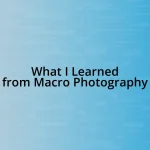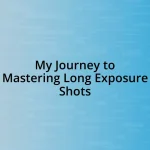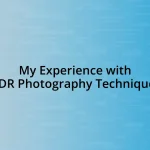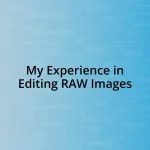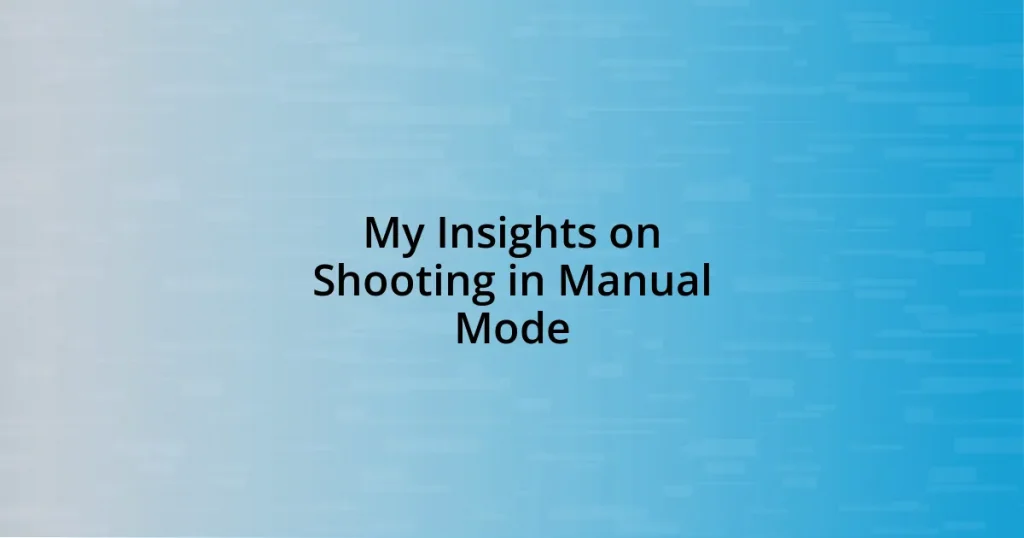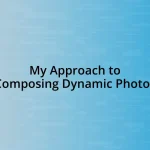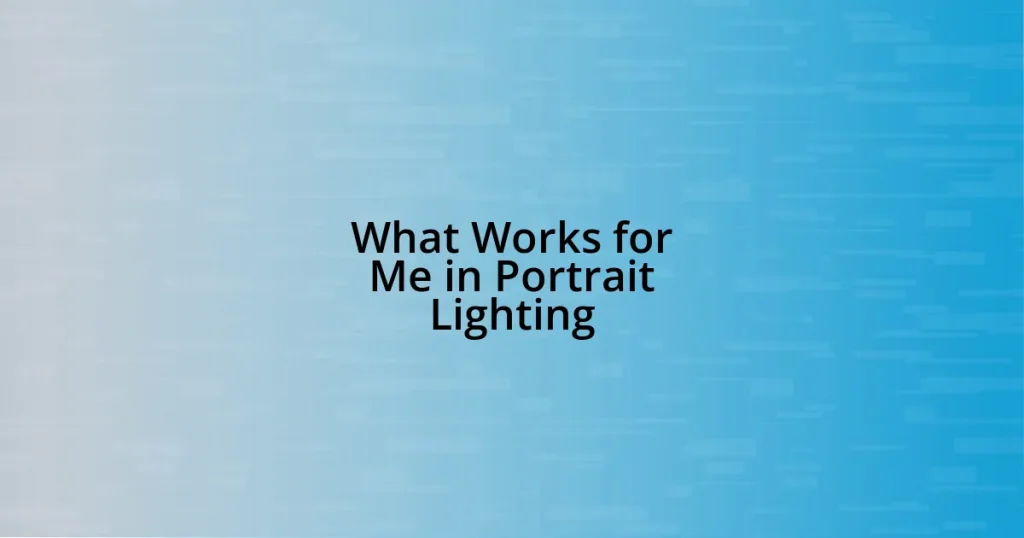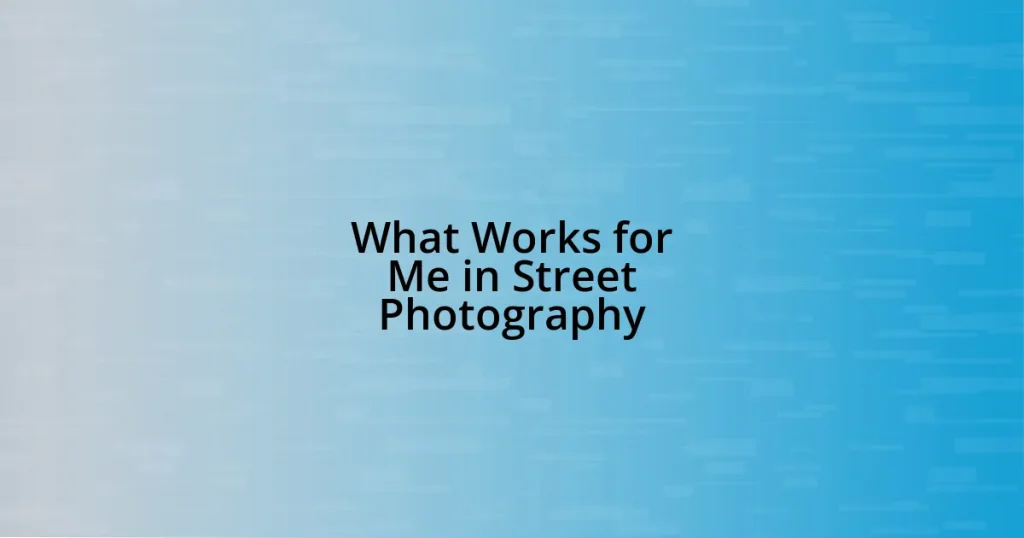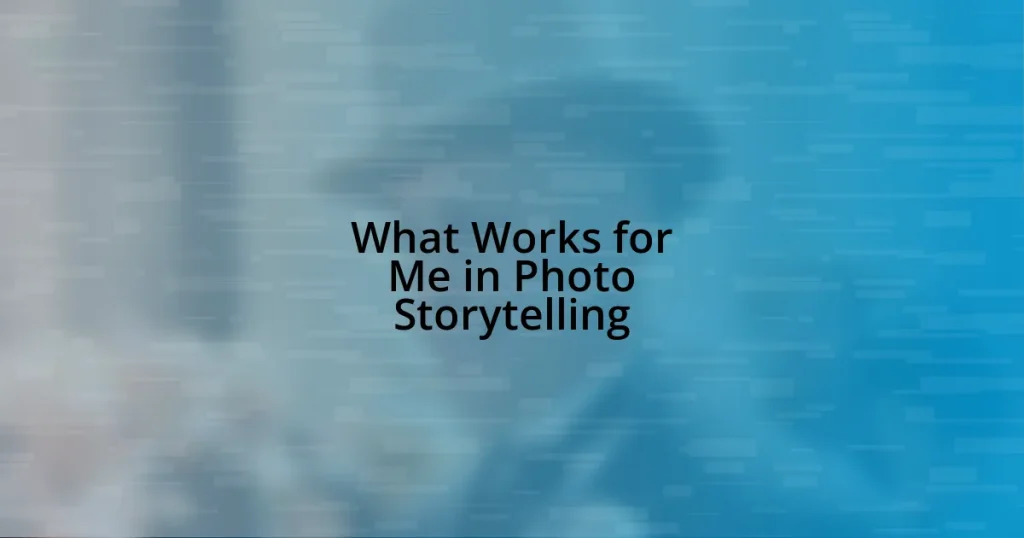Key takeaways:
- Shooting in manual mode enhances creative control by allowing adjustments to aperture, shutter speed, and ISO for optimal image capture.
- Mastering camera settings and the exposure triangle through practice leads to a deeper understanding of photography fundamentals.
- Evaluating and reflecting on past shots aids in improving skills—seeking feedback can provide valuable insights for growth.
- Emphasizing focus techniques, like focusing on eyes in portraits or using continuous autofocus, enhances the emotional impact of images.

Understanding Manual Mode Benefits
Shooting in manual mode can feel like an exhilarating dance with your camera. I remember the first time I truly embraced manual settings; it was as if a veil lifted, granting me an unprecedented control over my images. Have you ever experienced that moment when everything clicks together? The ability to adjust settings like aperture, shutter speed, and ISO in real-time allowed me to adapt to changing light conditions, totally enhancing my creativity.
One of the most significant benefits of manual mode is the level of precision it offers. I often find myself in situations where the auto settings simply don’t capture the emotion of the moment—like that breathtaking sunset I almost missed because of my camera’s struggle with light balance. By taking charge of the exposure triangle—aperture, shutter speed, and ISO—I was able to craft the image I envisioned, rather than settling for what my camera thought it should be.
Moreover, manual mode deepens your understanding of photography fundamentals. Each time I tweak a setting, I’m reminded of the principles at play, cementing my knowledge in a way that automatic settings never could. Have you ever felt that rush of satisfaction when the technical aspects harmonize with your artistic vision? That mastery not only boosts confidence but also transforms the way I approach every scene.
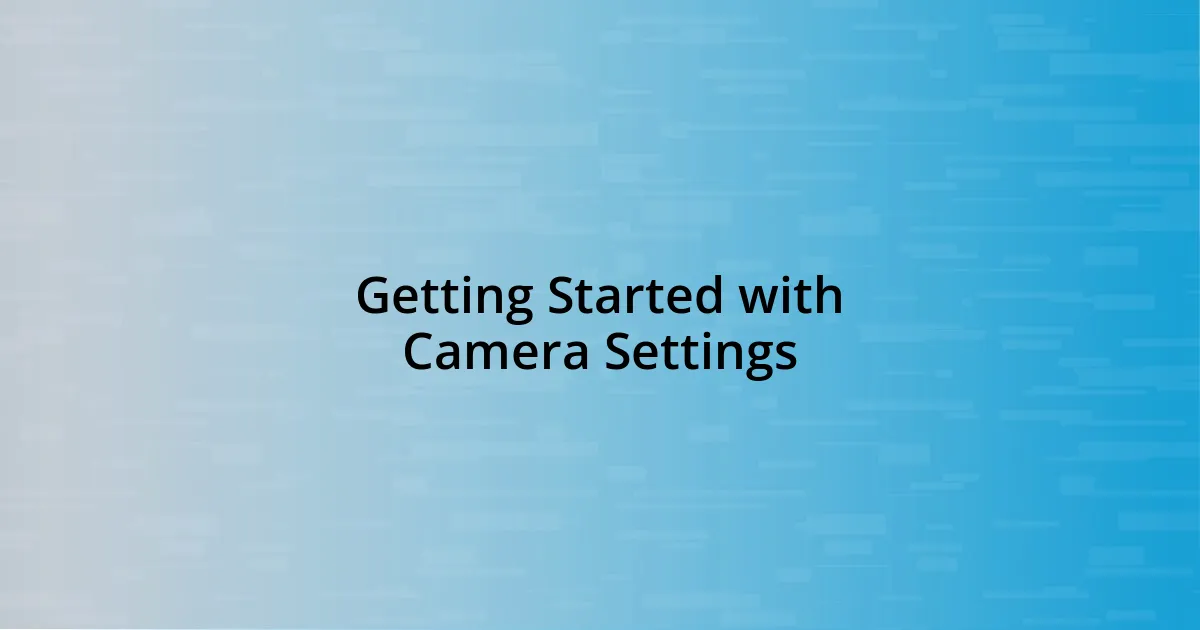
Getting Started with Camera Settings
Getting started with camera settings can seem daunting, but it’s all about taking that first step. When I first started using manual mode, I remember fiddling with dials and buttons, feeling like I was juggling a bunch of unknown variables. It wasn’t until I really focused on understanding my camera’s settings that I began to capture the images I envisioned. It’s like learning the ropes of a new hobby; once I got the hang of it, everything started to flow more naturally.
One of the keys to unlocking manual mode is mastering the exposure triangle: aperture, shutter speed, and ISO. Each of these settings plays a vital role in how light enters your camera and hits the sensor. You have to think about how they interact—like in that rainy day shoot where I had to quickly adjust settings to achieve the mood I wanted, capturing the soft rain against vibrantly colored umbrellas. Understanding these relationships not only gives you the power to create compelling images but also enhances your creative expression.
Remember, it’s all about practice and experimentation. I suggest spending time in different lighting conditions and adjusting your settings accordingly. I vividly recall one evening where I experimented with low light; it didn’t always pan out, but those failures became some of my most valuable learning experiences. That’s how you grow as a photographer—by pushing your boundaries and discovering what works best for you.
| Camera Setting | Description |
|---|---|
| Aperture | Controls the amount of light entering the lens and depth of field. |
| Shutter Speed | Determines how long the camera’s shutter remains open, affecting motion blur. |
| ISO | Adjusts the camera’s sensitivity to light. |
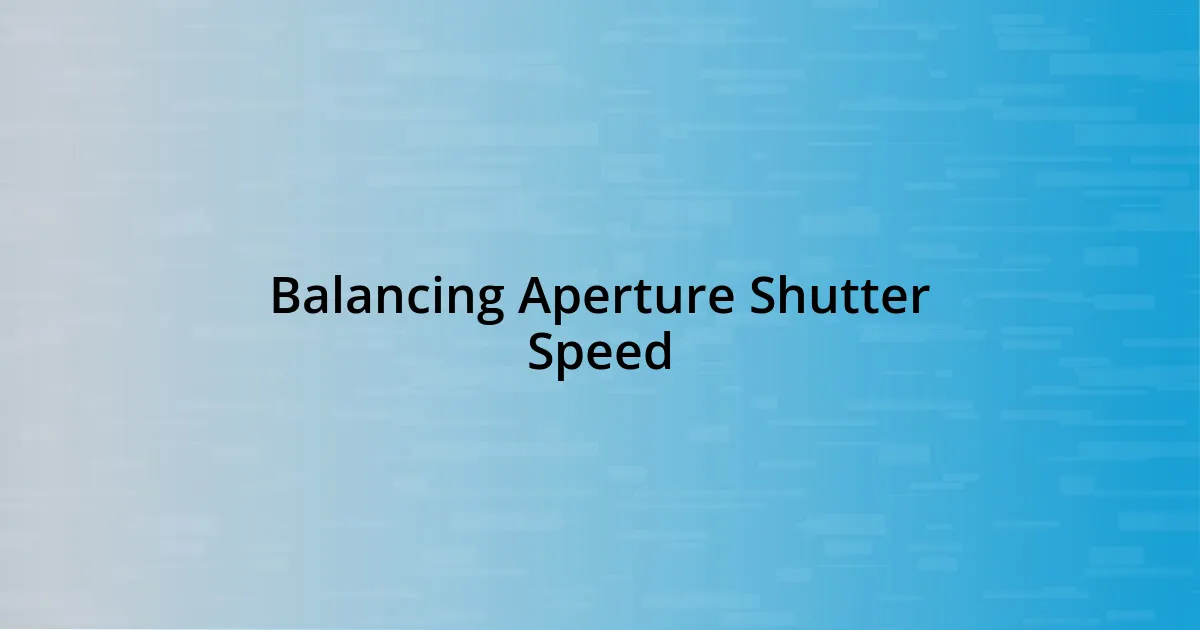
Balancing Aperture Shutter Speed
Balancing aperture and shutter speed can be a delicate dance. I often find myself adjusting these settings based on what feels right for the moment. For example, during a hike through a sun-dappled forest, I was struck by the contrasting light and shadows. By widening the aperture to create a beautiful blur in the background and pairing it with a faster shutter speed, I captured a series of breathtaking shots. The balance really allowed me to showcase that magical interplay of light—each image telling its own story.
- Aperture: Affects depth of field; a lower f-number creates a blurrier background, isolating the subject.
- Shutter Speed: Freezes or blurs motion; faster speeds handle movement better, while slower speeds can create artistic blur.
- Practical Tip: Think about your intent; if you want to emphasize motion in a busy scene, opt for a slower shutter speed combined with a wide aperture to keep the subject clear.
Adjusting these settings can transform not just your images, but also your understanding of light itself. Once, while capturing a bustling street market, I found myself juggling between a low aperture and a slower shutter to capture the vibrancy of everyday life swirling around me. Each click of the shutter delivered a new revelation—an insight into how the right combination can bring your artistic vision to life.

Using ISO for Optimal Exposure
Using ISO effectively is crucial for achieving optimal exposure in various lighting conditions. I vividly recall a sunset shoot where the sky transitioned from vibrant oranges to deep blues. By adjusting the ISO higher, I was able to maintain clarity and detail in the fading light without compromising on the richness of those colors. It was a realization that sometimes, when light is scarce, a higher ISO can be a game-changer.
Have you ever faced a challenging moment in low light, with that perfect shot slipping away? In those instances, tweaking the ISO can rescue the day. I once found myself in a dimly lit restaurant, trying to capture the ambiance without a flash. By adjusting my ISO to a higher setting, I was able to embrace the warm glow of candlelight, which added a layer of intimacy to the photographs. Higher ISO settings can introduce some grain, but when managed well, it can enhance the overall mood.
It’s important to strike a balance that suits your creative vision. On another occasion, during an early morning shoot at the beach, I began with a low ISO to capture the serene stillness. However, as the sun rose, I quickly adjusted settings to capture the dynamic waves without losing detail. I learned that understanding how ISO interacts with light not only sharpens my skills but also ignites my creative spark—transforming a simple scene into a captivating image.
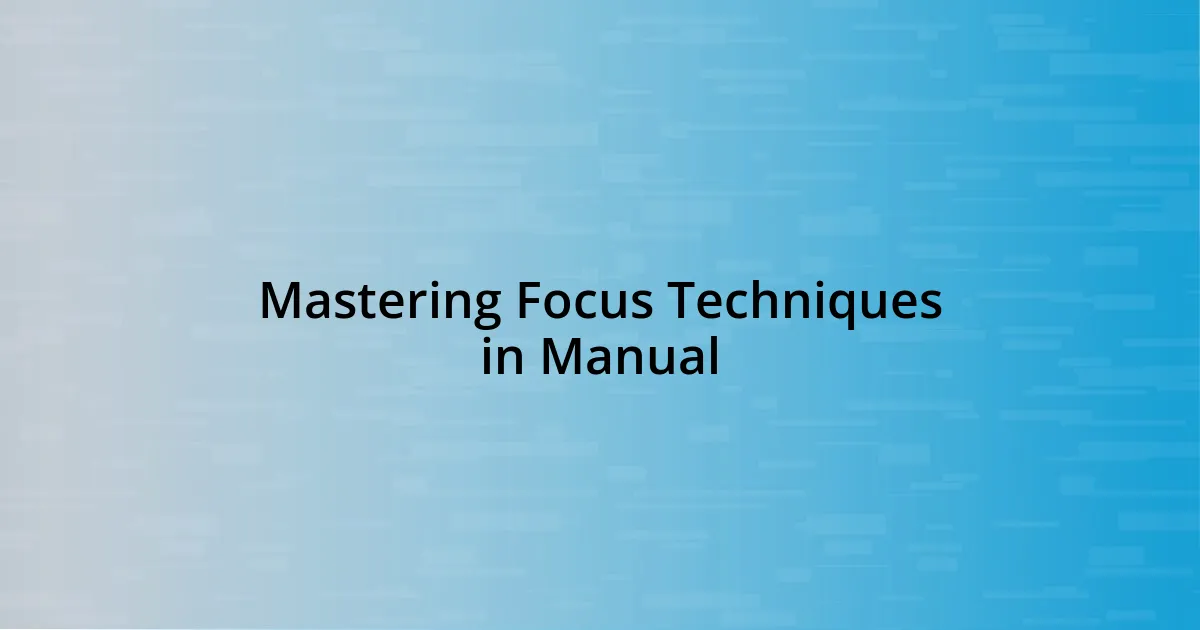
Mastering Focus Techniques in Manual
Mastering focus techniques in manual mode is like unlocking a secret door to creative photography. I remember my first outdoor portrait session, surrounded by friends who graciously volunteered to model. As I started composing each shot, I realized that focusing on the eyes made a world of difference. Once those eyes were sharp, the rest of the image seemed to follow suit, creating a captivating connection that drew viewers in.
I often think about the transformative power of different focus modes. Have you ever watched a subject move unexpectedly during a shoot? I certainly have. In those moments, switching to continuous autofocus (AF-C) allowed me to capture fleeting expressions that would have otherwise gone unnoticed. That day at the park, as kids raced by laughing, I was grateful for the ability to maintain focus on them while they dashed in and out—each frame became a glimpse into pure joy.
Using focus peaking is another technique I’ve embraced. During a late-night cityscape shoot, I set my camera to show a colored outline around in-focus areas, guiding me in the darkness. There’s something rewarding about knowing that every adjustment can bring my vision to life. With practice, I discovered that mastering focus is not just about technical settings; it’s about connecting with my subject and conveying emotion, turning each photo into a narrative.
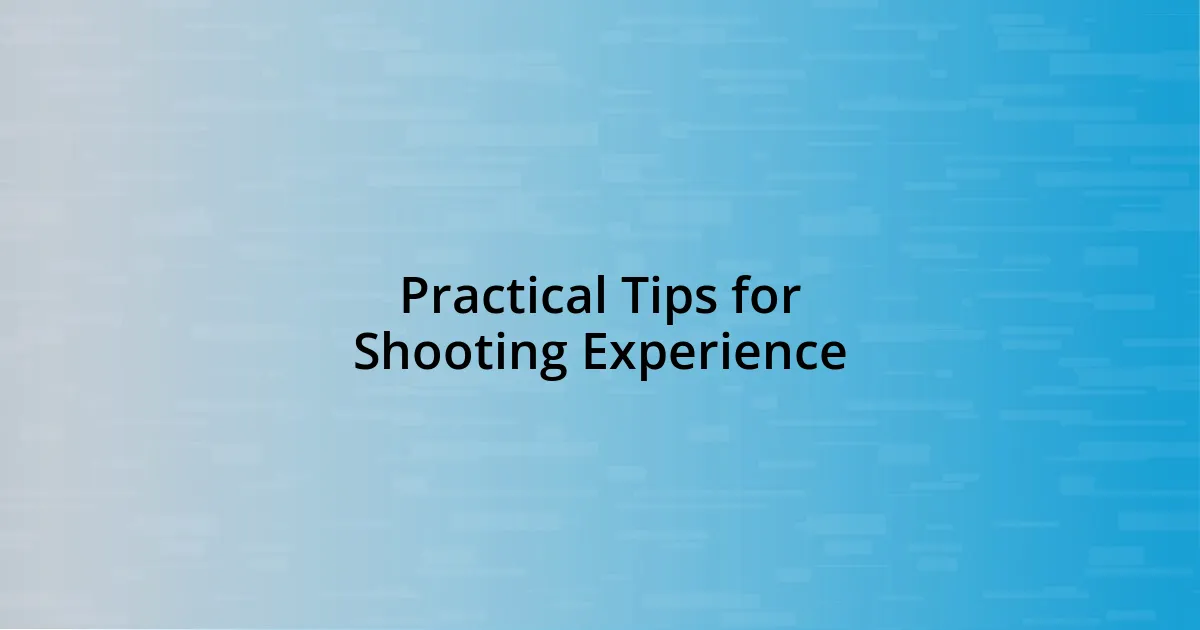
Practical Tips for Shooting Experience
Shooting in manual mode isn’t just about adjusting settings; it’s about developing a rhythm with your camera that feels second nature. I remember the first time I shot in fast-changing light during a dance performance. With the performers spinning across the stage, I had to rapidly adjust my shutter speed, but the real challenge was maintaining my composure. The pressure was palpable, yet that’s when I realized the beauty of getting comfortable with my controls—I was able to capture the echoes of movement in a way that told a powerful story.
Have you ever felt the thrill of improvisation while capturing a moment? It happened to me when I was photographing street art in an urban alley. Just as I arrived, an artist began painting spontaneously. I quickly shifted my aperture to let in more light, and instead of panicking, I found myself immersed in the creative flow. This spontaneity often leads to the most authentic images—the ones that really resonate with viewers. It’s a reminder that flexibility in your settings allows you to adapt to the unexpected.
Don’t forget to take breaks while shooting; they rejuvenate your creativity. After several hours of shooting at a vibrant market, I stepped back to savor the surroundings. This moment of stillness led to an unexpected insight: I began to view the interactions and colors from a completely different angle. It’s as if stepping away for just a moment let me reset my perspective, allowing my new shots to carry the energy of my refreshed mindset. So, when in the midst of capturing life, don’t overlook the power of pausing. Every moment is a chance to find clarity and inspiration.

Evaluating and Improving Your Results
Evaluating the results of my manual mode shots has become an insightful part of my photography journey. After a recent wildlife photography trip, I reviewed my images and noticed that some were beautifully composed, yet lacked the sharpness I craved. This led me to wonder: Was my shutter speed too slow, or was I too caught up in the excitement? It hit me; every image is a learning opportunity. By analyzing what went right and what didn’t, I can slowly fine-tune my technique.
One powerful exercise I embraced was comparing my shots against those of photographers I admire. During a weekend workshop, I took time to study their approach to lighting and composition. I remember being struck by how a slight adjustment in angle could completely change the mood of a photograph. When I analyzed my own work side-by-side, I felt a renewed sense of awareness about my style. Should I take more risks with composition? This reflective exercise bolstered my confidence to step out of my comfort zone, aiming for that captivating shot.
Improving results also involves testing and tweaking settings based on feedback. I recall a local street festival where I shot in various lighting conditions. I encountered a sunset that washed everything in golden hues, and I quickly adjusted my white balance. Later, a fellow photographer mentioned how crucial that adjustment was for avoiding overly warm images. That illuminating moment reaffirmed for me the power of feedback. So, don’t be afraid to seek out constructive criticism—it could open doors to new insights and radically elevate your work!





